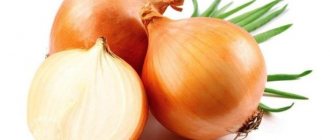Bacterial vaginosis, otherwise called gardnerellosis
or dysbacteriosis is a little-studied but widespread disease of the female genital organs.
It is characterized by a disruption of the natural microflora in the vagina and is more common in women of fertile (childbearing) age.
The disease occurs due to improper personal hygiene, penetration of foreign bodies, or through a man who had a relationship with a sick woman.
If the gynecologist has diagnosed bacterial vaginosis
“
Treatment with folk remedies
is often no less effective than the use of expensive drugs.
How to recognize gardnerellosis and confirm the disease?
The vaginal microflora consists of many bacteria, but there are more “good” ones that are necessary for health. However, sometimes a small number of unwanted bacteria begin to increase sharply, disrupting the normal functioning of the body. This is called dysbiosis.
Factors influencing the growth of bad bacteria
- Long-term use of an intrauterine device;
- abortions and miscarriages;
- intestinal dysbiosis (treatment of dysbiosis with folk remedies in adults);
- contraception pills;
- new sexual partner;
- weakened immunity;
- constant wearing of synthetic underwear (in particular, thongs) and tight trousers that block air access to the genitals;
- conducting a course of antibiotics;
- douching with preparations containing chlorine;
- Frequent wearing of panty liners and tampons.
Bacterial vaginosis: symptoms and treatment with traditional medicine
The disease is easy to recognize on your own, but before starting treatment it is necessary to confirm it with a gynecologist.
Vaginosis is manifested by an unpleasant odor of female discharge. It resembles the “aroma” of rotting fish and intensifies during sexual intercourse due to interaction with sperm. The discharge itself looks normal - transparent, homogeneous in small quantities.
When contacting a gynecologist, a smear is taken from the patient for testing to confirm the diagnosis. If the disease is still present, an individual treatment regimen
, divided into two stages:
- Destruction of harmful bacteria from microflora with the help of medications.
- Rehabilitation of the normal state of microflora using probiotics (drugs that restore the number of beneficial bacteria) or a special diet.
For the first stage, antimicrobial suppositories
or tablets (antibiotics). The choice of drug depends on the results of the research: it should be aimed at destroying exactly those bacteria that have multiplied in the vagina.
Please note that taking antibiotics can cause intestinal dysbiosis, therefore, simultaneously with the treatment of vaginosis, medications are often prescribed to normalize the intestinal microflora. Or treatment of intestinal diseases with folk remedies is used.
Usually the gynecologist prescribes a course of treatment with drugs containing Metronidazole (Metrogil, Klion, Trichopolum
, Flagyl, etc.), vaginal cream Clindacin, antibiotics Clindamycin or Metrogyl + gel.
To restore microflora in the treatment of bacterial vaginosis
the drugs
Linex, Bifidumbacterin, Acylact, Lactobacterin and others are prescribed
How to treat the disease
Therapy will be successful if the diagnosis is made in a timely manner. The main principle of treatment is the normalization of the correct microbiocenosis of the genital organs, that is, the creation of an acidic environment in it; it is also necessary to stop the growth and reproduction of bacteria that are not characteristic of the vaginal microflora. Desensitizing and immunocorrective drugs are mandatory.
As a rule, for the treatment of bacterial vaginitis, suppositories and tablets are chosen, the main active ingredient of which is Metronidazole, which is effective in the fight against anaerobic bacteria.
The following candles can be used:
- Neo-Peotran;
- Metrogil;
- Flagyl;
- Trichopolum.
Suppositories for bacterial vaginosis must be inserted as deep as possible into the vagina at night, 1 (less often 2) pieces.
Gels and creams applied to tampons can also be used, among them:
- Metrogyl-gel;
- Dalatsin;
- Rosex.
In parallel with local therapy, a woman also needs to take oral tablets at a dosage of 0.5 g twice a day:
- Metrogyl tablets;
- Treecaside;
- Efloran;
- Metrozol.
Attention! During the treatment of bacterial vaginosis with drugs containing metronidazole, it is forbidden to drink alcohol; patients may also experience adverse reactions - nausea and a metallic taste in the mouth.
Along with the main treatment, the woman is prescribed vitamin C to stimulate the immune system and improve tissue regeneration. It is also recommended to take antihistamines, for example Loratodin or Suprastin.
It is very important to restore the vaginal microflora; for this purpose, drugs such as:
- Bifidumbacterin;
- Lactobacterin;
- Atsilak et al.
They should be administered as follows: the drug is diluted in boiled water, a tampon is blotted and inserted into the vagina, morning and evening. Bifidumbacterin in suppositories or Vagilak lactobacillus can also be used.
If the disease was detected at the initial stage, then it can be cured quite quickly within 5-7 days.
Nutritional adjustments play an important role in the treatment of bacterial vaginosis. It is necessary to exclude from the diet:
- fast food;
- confectionery;
- flour products;
- fat meat;
- smoked products;
- canned food
Attention! A cure for the disease is indicated not by the absence of symptoms, but by laboratory confirmation of the absence of pathological microorganisms in the smear.
Traditional methods of treating bacterial vaginosis
If the patient does not want to be treated with medication, folk recipes can help get rid of the unpleasant disease. This is financially beneficial and reduces the risk of allergic reactions to medications.
The very concept of this disease in “grandmother’s” medicine appeared recently, so basically all recipes are aimed at eliminating discharge with an unpleasant odor and restoring microflora.
Important! Treatment of bacterial vaginosis during pregnancy should only be carried out under the supervision of a gynecologist. Do not experiment, as this disease can cause:
- embryo infection;
- postpartum infectious inflammatory processes;
- premature birth.
Douching according to folk recipes
- One tablespoon of herbal mixture of chamomile and cinquefoil or plantain should be poured with a liter of boiling water and allowed to brew for half an hour. Then the mixture is filtered and douched in the morning and before bed.
- A tablespoon of oak bark is poured into 200 ml of boiling water and heated over steam for 10 minutes. Then the infusion should be poured into a thermos, left for 3 hours, strained and allowed to cool. For 7 days, douche at night.
- A tablespoon of bird cherry with 300-400 ml of water is brought to a boil over high heat, then it is reduced and the broth is kept for another third of an hour. The cooled and strained broth is syringed every day for one week, a glass each time.
- Chamomile (5 parts), walnut foliage (5 parts), sage leaves (3 parts), mallow and oak bark (2 parts each) are mixed into an herbal mixture. Pour 2 tsp into a liter of boiling water. mixture and boil it all for half an hour. Douche twice a day. In this recipe, you can replace the herbal mixture with calendula marigolds: a tablespoon per 100 ml of water, the whole thing is boiled for a quarter of an hour.
- Mix a collection of coltsfoot leaves and juniper fruits - 3 parts each, yarrow, horsetail, medicinal clover, eucalyptus and wintergreen - 2 parts each. 2 grams of the collection are poured into a glass of boiling water and infused. Douche 50 ml every other day for a course of 2-3 weeks.
Tampons
Treatment of bacterial vaginosis with folk remedies
successfully passes with the help of gauze swabs soaked in herbal remedies. In addition, they help get rid of unpleasant itching or burning sensation.
Gauze rolled up into a tampon or a hygienic tampon, which can be purchased at a pharmacy, is impregnated in two ways: aloe juice, diluted with olive oil in a 1:1 ratio, or sea buckthorn oil. The finished “preparation” is inserted into the vagina and left for 7-8 hours - it is more convenient to perform the procedure before bed.
Relieving baths
It is advisable to include a daily 20-minute sitz bath (waist-deep) in herbal decoctions in the complex treatment. Here are some recipes:
- Soak 250 grams of oak bark in cold water and let them soak for 3-4 hours. Boil the mixture, strain and pour into a pre-prepared bath. The procedure relieves inflammation and accelerates wound healing.
- Prepare a mixture of oat straw, walnut leaves, juniper berries, oak bark and medicinal chamomile, cook for ¾ hours in a lidded container, strain and mix with bath water. You can only use chamomile (150 grams) or walnut leaves (250 grams). This folk remedy for the treatment of bacterial vaginosis
has antifungal, antiviral and antimicrobial properties.
- Dilute half a liter of hot water with two tablespoons of honey, preferably flower honey. Pour the mixture into the bath and add some bubble bath to improve the penetration of honey particles under the skin.
How to treat bacterial vaginosis
An imbalance in the vaginal microflora can cause the development of bacterial vaginosis, an infectious disease that causes women significant discomfort. We tell you what kind of disease this is, how it manifests itself, and how doctors advise to treat it.
WHAT IS BACTERIAL VAGINOSIS
Bacterial vaginosis (vaginal dysbiosis, gardnerellosis, nonspecific vaginitis) is the most common cause of vaginal infections in women of childbearing age. Although the disease often develops after sexual intercourse with a new partner, bacterial vaginosis is not a sexually transmitted infection .
“This is one of the types of bacterial vaginitis, when the balance between normal and opportunistic microflora is disrupted under the influence of a number of factors,” says obstetrician-gynecologist Elena Berezovskaya. – The occurrence of bacterial vaginosis depends on the woman’s age, her sexual activity, hormonal balance, immunological status, genital hygiene, and the presence of skin diseases.
STIs, the use of antibiotics, hormones, endocrine disorders, menstrual dysfunction , surgical termination of pregnancy, operations, penetrative diagnostic and therapeutic procedures, intrauterine contraception and even environmental problems can also lead to an imbalance in the vaginal flora. Under the influence of these factors, there is a sharp decrease in the number of lactobacilli, which, in turn, leads to a decrease in lactic acid content and a shift in pH to the alkaline side. At the same time, conditions are created for the accelerated reproduction of opportunistic microflora and gardnerella.
Since it is Gardnerella vaginalis that in most cases causes vaginal dysbiosis, many doctors call bacterial vaginosis gardnerellosis.
CAUSES OF BACTERIAL VAGINOSIS
Obstetrician-gynecologist Vyacheslav Ivannikov told us about the causes of bacterial vaginosis:
The vaginal microflora is a mobile ecosystem. Normally, it is based on lactobacilli, which play a protective function. Lactobacilli convert glycogen into lactic acid, reducing vaginal acidity. In addition, lactobacilli produce hydrogen peroxide.
The acidic environment of the vagina and hydrogen peroxide suppress the growth of opportunistic microbes (staphylococci, streptococci, E. coli, anaerobic bacteria, gardnerella, etc.), which are detected in small quantities in the vagina in the vast majority of women. If the proportion of lactobacilli decreases, their place in the ecosystem is taken by opportunistic microbes (primarily Gardnerella).
Any woman can develop bacterial vaginosis.
Thus, the cause of the disease is not simply the presence of pathogens of bacterial vaginosis (almost every woman has them in small quantities), but a change in the ratio of the proportion of lactobacilli and opportunistic microbes that cause bacterial vaginosis. With bacterial vaginosis, the proportion of lactobacilli decreases, and the proportion of bacterial vaginosis pathogens increases. This is why bacterial vaginosis is called vaginal dysbiosis.
Bacterial vaginosis can develop in any woman, although some factors disrupt the natural microflora and increase the risk of developing the disease:
- douching with water or medicinal solutions to cleanse the vagina;
- having a new sexual partner;
- having multiple sexual partners;
- using scented soap;
- smoking;
- use of intrauterine devices (IUDs) made of plastic and copper;
- use of vaginal deodorants;
- washing underwear using some detergents.
You can NOT get bacterial vaginosis from a swimming pool, toilets, bedding or other items.
SYMPTOMS OF BACTERIAL VAGINOSIS
About 50% of women with bacterial vaginosis have no symptoms. Moreover, sometimes bacterial vaginosis can appear and disappear for no apparent reason. Statistically, even if antibiotic treatment is effective in 90% of cases, 25% of women may develop bacterial vaginosis again within the next four weeks.
The main symptom of bacterial vaginosis is vaginal discharge: thin and watery, gray or white, odorless or with a strong unpleasant “fishy” odor.
Burning during urination and itching of the external genitalia can also indicate vaginal dysbiosis, but are much less common.
Typically, bacterial vaginosis is diagnosed during an examination : the gynecologist, in addition to the patient’s complaints, will pay attention to the presence of white or gray discharge and an unpleasant odor. If the patient is sexually active, there is a chance that she may have an STI, and the doctor may order some additional tests.
HOW TO TREAT BACTERIAL VAGINOSIS
“The treatment of bacterial vaginosis is quite simple - it is the use of antimicrobial drugs containing metronidazole,” says Elena Berezovskaya. – In some cases, treatment must be cyclical. After antimicrobial treatment, it is advisable to restore normal vaginal microflora with lactobacilli preparations. It is important to remember that eliminating or reducing the influence of factors that provoke the growth of opportunistic flora is the key to successful treatment. Since vaginal dysbiosis is often associated with intestinal dysbiosis, correction of the intestinal bacterial flora helps reduce the number of relapses of the disease.
Treatment of male partners does not reduce the number of relapses of vaginal dysbiosis in women.
It is noteworthy that men generally do not require treatment for bacterial vaginosis: studies have shown that simultaneous treatment of partners does not reduce the number of relapses of vaginal dysbiosis in women. Treatment of bacterial vaginosis is especially important for pregnant women , since the disease increases the risk of premature birth. Women who have previously had preterm labor or low birth weight babies should see a gynecologist even if they do not have any symptoms.
ANTIBIOTICS AND PROBIOTICS FOR THE TREATMENT OF BACTERIAL VAGINOSIS
Bacterial vaginosis can be treated with antibiotics. When used correctly, they are 85% to 90% effective.
Metronidazole is the most common antibiotic for treating bacterial vaginosis.
He is appointed:
- in the form of tablets taken orally 2 times a day for 7 days. This is the preferred treatment method if a woman is breastfeeding or expecting a baby;
- in the form of tablets that are taken orally once. Compared with a seven-day course of treatment, a single dose of metronidazole may lead to a relapse of bacterial vaginosis;
- in the form of a vaginal gel, which is applied once a day for 5 days;
- in the form of probiotics with metronidazole.
In a Cochrane systematic review, researchers reported that probiotics together with antibiotics increase the effectiveness of treating vaginal dysbiosis. Important: metronidazole does not interact well with alcohol, so when taking this antibacterial drug, you should not drink alcohol for at least 48 hours after finishing treatment.
Clindamycin is an antibiotic that is often used to treat bacterial vaginosis if metronidazole does not work or the disease has returned.
He is appointed:
- in the form of a vaginal cream, which is applied once a day for 7 days;
- in the form of a capsule, which is taken orally 2 times a day for 7 days.
This method is rarely used nowadays due to the risk of developing pseudomembranous colitis. Important: when treated with clindamycin, some barrier methods of contraception become less effective (latex condoms, diaphragms), so women are advised to use additional contraceptives (polyurethane condoms).
Tinidazole is another antibiotic that will help get rid of bacterial vaginosis if metronidazole is not effective. It is taken orally 1 time. You should not drink alcohol while taking this medicine.
TREATMENT OF BACTERIAL VAGINOSIS WITH FOLK REMEDIES
On the Internet you can find a lot of advice on alternative treatment for bacterial vaginosis. Most often it is recommended to douche with infusions of chamomile, decoctions of oak bark, bird cherry, coltsfoot leaves and juniper fruits. There are also recipes for baths made from herbal decoctions.
It is categorically not recommended to treat bacterial vaginosis on your own using unverified folk recipes: firstly, a woman may miss the accompanying inflammation, in which heating is contraindicated, and secondly, scientists have proven that douching increases the risk of ovarian cancer by 2 times and can contribute to the development of cervical cancer uterus, candidiasis (thrush) and some sexually transmitted infections.
Improper treatment of vaginal dysbiosis can lead to dangerous consequences. If you want to cure bacterial vaginosis without antibiotics, be sure to consult a gynecologist.
Improper treatment of vaginal dysbiosis can lead to dangerous consequences:
- make a woman more susceptible to HIV infection, herpes simplex virus , chlamydia, gonorrhea and HPV;
- increase the risk of developing certain pregnancy complications: premature birth, miscarriage, chorioamnionitis and postpartum endometritis, pelvic inflammation and upper genital tract infection.
Source Zvezda is a socio-political newspaper of the Khvalynsky district. Khvalynsk : https://hvzvezda.ru/zdorove/kak-lechit-bakterialnyi-vaginoz.html
Share link:
- Click to share on WhatsApp (Opens in new window)
- Click to share on Telegram (Opens in new window)
- Click here to share content on Facebook. (Opens in a new window)
- Click to share on Twitter (Opens in new window)
- Click to share on Skype (Opens in new window)
- Send this to a friend (Opens in new window)
- Click to print (Opens in new window)
By
Bacterial vaginosis: causes
Statistics show that approximately 30% of women who visit a gynecologist are ultimately diagnosed with this disease. And before considering the features of treating bacterial vaginosis with folk remedies, you need to learn more about the nature of the disease itself.
As you know, a woman’s vagina is inhabited by beneficial bacterial organisms that maintain the acidity level of the environment and perform many other functions. But sometimes, for one reason or another, the population of these bacteria decreases, but the reproduction of opportunistic microorganisms is activated. Thus, beneficial microflora is replaced by anaerobic associations, in particular, gardnerella, which is why bacterial vaginosis is often called gardnerellosis.
There are a huge number of risk factors, the impact of which increases the likelihood of developing such a disease. It's worth checking out their list:
- frequent change of sexual partners (after all, during sexual intercourse, partners exchange microflora);
- unbalanced diet (lack of lactic acid products in the diet, abundance of flour and sweet dishes);
- taking antibacterial drugs;
- taking antifungal medications;
- non-compliance with the rules of intimate hygiene or, conversely, excessive attention to hygiene;
- wearing synthetic, too tight underwear;
- sudden climate change;
- constant stress, emotional stress;
- constant use of tampons and pads;
- various gynecological procedures, including termination of pregnancy.
Causes of pathology
Long-term use of antibiotics can cause illness
Among the factors that contribute to the suppression of normal vaginal microflora and the development of vaginosis are:
Hormonal imbalance. An increased content of sex hormones in the blood prevents the normal development of lactobacilli, which reduces the body's resistance to pathogenic flora. The use of intrauterine devices installed to prevent unwanted pregnancy. Long-term use of medications, especially antibiotics with a broad spectrum of action. They inhibit the growth of lactobacilli, which leads to the uncontrolled proliferation of pathogens. A decrease in general immunity, resulting in a weakening of local protection. May be the result of previous diseases, HIV infection, diabetes mellitus. Lactobacilli deficiency in the gastrointestinal tract. Because of this, dysbacteriosis is formed, which also leads to bacterial vaginosis.
Based on research results, it was found that the disease can occur in young women who are not sexually active. In addition, it was found that it is not transmitted through sexual contact.
Return to content
What symptoms should you look out for?
In fact, in most cases the disease is asymptomatic. The main symptom in this case is the formation of copious vaginal discharge. Sometimes they are transparent, sometimes whitish or grayish. The discharge has a very characteristic unpleasant odor (rotten fish).
If you notice such symptoms, you should immediately contact the gynecology department. Bacterial vaginosis is a dangerous disease.
By the way, during a gynecological examination, signs of inflammation cannot be detected - the diagnosis can only be confirmed through laboratory tests. Pain, itching, burning and other unpleasant symptoms appear only in the presence of concomitant diseases. For example, bacterial vaginosis can be combined with candidiasis and other pathologies.
Why is bacterial vaginosis dangerous?
Despite the fact that the disease can occur without a serious deterioration in well-being, it should not be ignored under any circumstances. Lack of therapy is fraught with complications:
- microflora disturbance is accompanied by activation of ureaplasma, candidal fungi, mycoplasma;
- the activity of pathogenic microorganisms leads to inflammation, in particular, the development of endometritis, colpitis, vulvitis, cervicitis, adnexitis;
- women have problems with fertilization;
- if pregnancy does occur, then there is a high probability of developing complications, in particular, premature birth, damage to the amniotic membranes.
Information about conservative treatment
Is there a cure for bacterial vaginosis? Absolutely yes. But therapy must be started as quickly as possible and all doctor’s instructions must be carefully followed. Self-medication and inept use of certain techniques can only lead to the disease becoming chronic.
First of all, you need to cope with pathogenic microflora. For this purpose, drugs such as Clindamycin, Tinidazole, and Ampicillin are used. After the infection is defeated, special drugs are introduced into the treatment regimen to help restore beneficial microflora. Patients are prescribed Bifidumbacterin (in the form of suppositories), Vagilak, Simbiter, Lactobacterin. These preparations contain live strains of beneficial bacteria, as well as substances that create an optimal environment for further growth and increase in their population.
How to use tampons with medicinal compounds?
If we talk about the treatment of bacterial vaginosis with traditional methods, then we simply cannot fail to mention the use of tampons with medicinal compounds. It is in this way that the prepared drug can be introduced into the vagina, acting on pathogenic microorganisms from the inside.
You can make a tampon yourself. You just need to roll up sterile gauze in several layers. But it is much more convenient to use ordinary hygienic tampons, which are sold in every pharmacy.
- Sea buckthorn oil is very valuable for this disease. It has anti-inflammatory properties and accelerates the regeneration processes of the vaginal mucous membranes. You need to moisten a tampon in the oil, and then carefully insert it into the vagina. It is best to carry out the procedure before bedtime - the medicine should remain inside for 6-8 hours.
- Tampons with aloe juice are widely used in gynecology. Reviews confirm that this remedy really helps to quickly cope with inflammation and eliminate unpleasant symptoms. The product can be used both in pure form and in combination with other products. Fresh juice obtained from aloe leaves should be mixed with high-quality olive oil (in equal quantities). It is in this composition that it is recommended to moisten the tampon. The medicine must be taken at night.
- Aloe juice can be mixed with honey (it is important to choose a good, high-quality product), which has antiseptic properties. The components are combined in equal quantities.
- Freshly squeezed sweet clover juice is another good medicine that helps relieve itching and irritation and eliminate the main symptoms of bacterial vaginosis. You just need to moisten a sterile tampon in the product, insert it into the vagina and leave for 7-8 hours.
- To prepare the next medicine, mix 10 g of juniper leaves and pine needles. We first chop the plant parts with a knife and then pass them through a meat grinder or blender. You should get a homogeneous paste, which then needs to be applied to the tampon.
Reviews note that this treatment regimen for bacterial vaginosis with folk remedies is very effective, because the medicine gets directly onto the mucous membranes of the vagina. The course of therapy lasts from 10 to 14 days. If during the procedure you notice deterioration or any side effects, it is better to stop treatment.
Tampons
When thinking about how to treat bacterial vaginosis, one should not forget about gauze vaginal tampons, the use of which will also help restore the microflora of the genital organs and relieve itching and burning sensation.
The following recipes are used:
- Combine aloe juice with sea buckthorn oil in equal proportions. A gauze swab is thoroughly soaked in the resulting mixture and used to treat the pathological process. A total of 10 procedures will be required.
- Mix 10 g of pine needles and finely chopped juniper leaves. Grind the resulting mass in a meat grinder. Soak a tampon with the prepared slurry and insert it for 8–10 hours to treat bacterial vaginosis. Course - 2 weeks.
Liquid honey is mixed in equal parts with aloe leaves crushed in a meat grinder. The prepared pulp is used to impregnate vaginal tampons in the treatment of gynecological diseases. During the period of treatment of inflammation, sexual activity is prohibited.- Tampons with freshly squeezed sweet clover juice, inserted daily into the vagina for 8 hours, will help restore the microflora. Treatment is carried out for two weeks. If the unpleasant symptoms do not go away completely, the therapy can be repeated after a week.
Sitz baths for vaginosis
The treatment regimen for bacterial vaginosis with folk remedies necessarily includes regular sitz baths. This is a simple procedure that, judging by reviews, provides quick results.
- Pour 250 g of oak bark (sold in a pharmacy) with cold water and leave for 3-4 hours - the raw material should be well saturated with liquid and soaked. After this, the mixture must be boiled, strained and diluted with warm, boiled water. The container must be large so that the patient can sit in it. The procedure lasts about 20 minutes. A decoction of oak bark has pronounced anti-inflammatory properties and accelerates the healing process of wounds on the mucous membranes.
- A honey bath will also be useful. You just need to dilute two tablespoons of honey (preferably flower honey) in 500 ml of hot water (temperature no higher than 60 degrees) and add to the bath water.
- Decoctions of medicinal chamomile, string, and sage flowers are also suitable for sitz baths.
It is recommended to repeat the procedures daily for at least two weeks. You can alternate decoctions.
Douching with chamomile
This is one of the most common recipes that helps restore the vaginal microflora and get rid of such an unpleasant disease as bacterial vaginosis. Folk remedies are often used to treat a woman's reproductive system, and chamomile is one of the most common components that has a wide spectrum of action.
This medicinal plant has a calming, aseptic and anti-inflammatory effect. The decoction helps reduce pain - this means that douching with chamomile will help relieve itching and irritation. The properties of this plant are widely used in gynecology, as decoctions have a gentle and delicate effect on the intimate area of a woman.
Recipes for decoctions of medicinal herbs
How to treat bacterial vaginosis? Decoctions of medicinal herbs will help with this.
- Two parts of cornflower herb and cornflower flowers are mixed with three parts of kidneyweed herb. Pour a tablespoon of the resulting mixture into two glasses of boiling water, cover with a lid and leave for half an hour. After this, the medicine can be strained. It is recommended to take 100 ml twice a day (preferably in the mornings and evenings).
- To prepare this medicine, you will need equal amounts of shepherd's purse herb, bird cherry fruits, chamomile flowers, marshmallow and knotweed roots, as well as meadowsweet and nettle herbs. 30 g of the mixture should be poured into a liter of boiling water and left for three hours. You need to take half a glass twice a day.
Treatment at home with douching
Prepare a collection of dried chamomile, plantain, and cinquefoil flowers. Brew a tablespoon of the mixture with a liter of boiling water, cover and leave for at least 3 hours. Then strain the liquid and perform the douching procedure.
Pour a tablespoon of crushed oak bark into a glass of boiling water.
Place in a steam bath and leave for 10 minutes.
The resulting infusion is poured into a thermos and left for three hours, after which it is filtered. Treatment at home lasts 7 days.
You can treat the disease with bird cherry.
A tablespoon of raw material is poured into 300 ml of water, boiled for 15 minutes, then cooled and filtered. Douche once a day.
Five parts of chamomile and walnut leaves are mixed with three parts of sage and two parts of oak bark and mallow. Two teaspoons of the mixture are poured into a liter of boiling water and cooked over low heat for half an hour. The cooled and strained infusion is douched twice a day.
Brew a tablespoon of calendula flowers with a glass of hot water and boil for a quarter of an hour. Douche with the decoction also twice a day.
Three parts each of juniper fruits and coltsfoot leaves, two parts each of horsetail, sweet clover, eucalyptus, yarrow and wintergreen are mixed. A tablespoon of the prepared mixture is poured with boiling water and left to cool completely. A course of douching with this infusion lasts 2-3 weeks.
Strengthening the immune system
As already mentioned, bacterial vaginosis in women is directly related to a violation of the composition of the natural microflora and the active reproduction of pathogenic microorganisms. All this occurs against the background of decreased immune activity. That is why the treatment regimen must include vitamin complexes and other means that strengthen the body’s defenses and increase its resistance to various types of infections. Some medications can and even need to be prepared independently.
- A decoction of rowan berries is considered very effective. Pour two tablespoons of dried berries into two glasses of water, put on fire and bring to a boil. The composition must be boiled for 15 minutes. After the broth has cooled slightly, add two large spoons of natural honey to it. To achieve maximum effect, you can add two small peeled onions to the strained broth, after chopping them on a fine grater. Traditional healers recommend eating a spoonful per day.
- It's no secret that citrus fruits contain a huge amount of vitamin C, which has a beneficial effect on the functioning of the immune system. Chopped lemon zest should be mixed with freshly squeezed lemon juice and honey. You need to take a tablespoon twice a day. You can use oranges instead of lemons.
- Dried fruits will also help strengthen your immune defense. To prepare the medicine, you need to take 0.5 kg of raisins, dried apricots, walnuts and prunes, mince them and mix with 500 ml of honey. To achieve maximum effect, it is worth adding two lemons to the composition - they also need to be chopped, together with the peel. Keep the medicine in the refrigerator, take a tablespoon 30 minutes before breakfast (on an empty stomach).
Infusions for douching
They are often used due to their delicate effect. Because of this, there are many recipes:
- Chamomile infusion. You need 1 tbsp. l. chamomile from the pharmacy, pour a glass of boiling water and heat in a water bath for 10 minutes. Next, leave the solution for half an hour, strain the liquid through gauze and use it warm for douching. The frequency of the procedure is morning and evening.
- A decoction based on bird cherry fruits is made as follows: 1 tbsp. l. Add 2 cups of water to the fruit, bring to a boil and continue to simmer over low heat for 20 minutes. The resulting infusion is filtered and no more than 1 glass of decoction is used per procedure. Such sessions need to be repeated for 7 days.
- You can get a good solution that has a powerful antiseptic effect by brewing 2 tbsp in 1 liter of boiling water. l. each of the following products: oak bark, geranium, chamomile flowers. After the mixture has been infused for 12 hours, it must be strained. The resulting mixture should be used 2 times a day for a week.
- If you take 2 tbsp. l. calendula, Chernobyl and sage, pour boiling water over them and let them brew for 12 hours, you can get an effective infusion, which is used 2 times a week before bedtime.
- An infusion of peppermint and lavender is also often recommended for bacterial vaginosis. To prepare the medicine, you should take 3 tbsp. l. each herb, pour boiling water and hold for about 15 minutes in a water bath. Use in the evenings 3 times a week.
- A fairly simple infusion can be made using 1 tbsp. l. oak bark. After filling it with 200 ml of boiling water and keeping it in a water bath for 10 minutes, pour the liquid into a thermos and leave for 3 hours. Use the medicine at night for a week.
- The use of hydrogen peroxide is considered one of the best means of restoring acidity. To do this, use a 1% solution of hydrogen peroxide (other concentrations can be harmful) 2 times a day for at least a week.
However, we should not forget that the abuse of douching (especially if it is used as a preventive measure) can also be the cause of bacterial vaginosis. Uncontrolled implementation of the procedure does not change the vaginal microflora for the better and, as a result, reduces the environment’s resistance to harmful microbes.
This procedure must be carried out carefully, observing basic hygiene rules. It is necessary to disinfect the device that will be used for the procedure, and use Vaseline or another similar cream when inserting the device to avoid minor injuries to areas of the mucous membrane. In addition, the temperature of the injected solution should be comfortable, not too hot or cold. You can check whether the temperature is comfortable by dipping your elbow into the liquid. The total procedure time should not be more than 15 minutes.
Prevention: how to protect yourself?
So, we already know how to treat bacterial vaginosis. Nevertheless, it is worth trying to protect yourself from the disease - it is not that difficult. Of course, there is no special vaccine or other means that can prevent the development of gardnerellosis. But experts recommend following some rules:
- monitor intimate hygiene;
- select exclusively high-quality hygiene products (in particular, pads, tampons, washing gels);
- stop wearing tight synthetic underwear;
- dress according to the weather, avoid hypothermia;
- refuse casual sexual intercourse, use condoms;
- do not take antifungal and antibacterial drugs without a doctor’s prescription;
- undergo timely therapy in the presence of certain inflammatory/infectious diseases.
Of course, you should not ignore preventive gynecological examinations - you need to see a doctor twice a year, even if there are no objective symptoms of the disease. If you experience any alarming changes in your health, you should contact a specialist.
Bacterial vaginosis is an infectious disease that is manifested by a decrease in normal flora in the vagina and the absence of an inflammatory response. In this case, colonies of bacteria appear, consisting of opportunistic species and gardnerella (a type of microorganisms that live in small numbers in the vagina of healthy women and are suppressed by lactobacilli, but when the normal flora dies, gardnerella begin to actively multiply). Bacterial vaginosis is not a sexually transmitted infection, so treatment of the partner is not required.
Bacterial vaginosis and folk remedies for its treatment
Due to disruption of the natural microflora of the vagina, there is a risk of a pathology such as bacterial vaginosis. To make it clearer, this disease is an infection, but without an accompanying inflammatory process. The disease is characterized by the absence or replacement of beneficial microflora with anaerobes and gardnerella.
A considerable number of different microorganisms take part in the development of bacterial vaginosis. However, due to the fact that there are no leukocytes in the vaginal secretion, inflammation does not develop.
If you have bacterial vaginosis
Otherwise, the disease is called gardnerellosis. It is important to know that this disease is not sexually transmitted, although the pathogen can be transmitted through sexual contact.
Pathology develops, as a rule, as a result of: non-compliance with personal hygiene rules, decreased immunity, prolonged use of an intrauterine device, termination of pregnancy, frequent use of feminine hygiene products (tampons and pads), douching with solutions containing chlorine, wearing poor-quality underwear, too tight clothes.
Traditional medicine in the fight against disease
Along with the medications prescribed by your doctor, you can use equally effective alternative medicine. They are made from natural ingredients - medicinal plants, and this can only be beneficial. Moreover, they are time-tested.
Folk remedies for the treatment of vaginosis are quite varied, but they will only help if they are used wisely and appropriately. Do not self-medicate under any circumstances. To begin therapy for any disease, in particular bacterial vaginosis, it is necessary to contact a specialist and identify the reasons that triggered its development.
Recipes for douching
- Combine dried chamomile flowers and cinquefoil in equal proportions, chop the components and pour 15 grams of the mixture into a thermos.
Fill the raw material with boiled water - about a liter. Infuse the composition in a warm room for 30 minutes. Then filter and use for douching twice a day: in the morning and before going to bed. - Take dried oak bark, chop it and pour boiled water into a glass.
Simmer the mixture over low heat for twenty minutes. After this, pour into a thermos and leave in a dry, warm room for several hours. Douching should be done once a day. The treatment course is a week. - Pour 20 grams of dried crushed bird cherry fruits into a saucepan, preferably enameled.
Pour boiling water over the raw materials - two glasses. Place the mixture on the stove and wait until it boils. Reduce the heat a little and simmer for a quarter of an hour. Use the decoction for daily douching. The procedure should be carried out once a day. The course of therapy is a week. - Mix two spoons of dried chamomile flowers with the same amount of walnut leaves, a spoonful of sage leaves, mallow and oak bark.
Grind the ingredients and pour a few teaspoons of the mixture into a saucepan. The composition must be boiled and then left to brew. Douche with a healing decoction twice a day. - Combine coltsfoot leaves in equal proportions with juniper fruits, wintergreen, sweet clover, eucalyptus, yarrow, and horsetail.
Finely chop all the ingredients and mix thoroughly. Brew a few tablespoons of the mixture with boiled water. Place the mixture in a warm place for an hour. It is recommended to douche with the infusion every other day. The duration of the therapeutic course is 20 days.
The use of healing baths
It is recommended to include in complex therapy the daily use of sitz baths (you need to immerse yourself in the bath up to your waist) from healing infusions. The products have antifungal, antiviral and antimicrobial properties and help eliminate the symptoms of pathology. To achieve maximum effect, it is recommended to take the procedure every day.
Pour 200 grams of oak bark with cold water. Leave for two hours. Then pour the mixture into an enamel saucepan and place on the stove. After boiling, filter and add to the bath. The duration of water procedures is 15 minutes.
Combine oat straw with juniper berries, walnut leaves, chamomile and oak bark in equal proportions. Finely chop all the ingredients and mix. Brew 30 grams of the mixture in half a liter of boiled water. Let the mixture soak for half an hour. Strain the mixture and add to the bath. The duration of the procedure is 15 minutes.
Dilute a few tablespoons of natural honey in half a liter of boiled water. Add the solution to the bath. You need to take a bath for a quarter of an hour.
The use of alternative medicine to strengthen the immune system
For treatment of the disease to be effective, it is imperative to strengthen the immune system. And folk recipes will help you with this.
Grate one quince fruit and several Antonovka fruits on a fine grater, combine with chopped cherries - two glasses, crushed garlic - ten cloves, chopped lemon. Mix the ingredients and brew in a liter of boiled water. Leave the composition for an hour in a warm room. After filtering, consume half a glass of the drug four times a day.
Pour 20 grams of dried rowan fruits into an enamel saucepan. Fill the composition with boiled water - half a liter. Boil over low heat for ten minutes. Then add a little honey, literally two spoons, and simmer the mixture for another three minutes. Next, chop several onions and combine with the resulting product. It is recommended to consume 10 g three times a day.
Combine equal amounts of marshmallow rhizome with sweet clover herb, nettle leaves, lavender herb, pine buds, wormwood herb, blueberry leaves, dried herb and leuzea rhizome.
All ingredients must be crushed and mixed thoroughly. Pour 20 grams of the mixture into a thermos, add boiled water and leave to steep overnight. Take 100 ml of medication before each meal.
The treatment course should be 90 days.
To prevent this disease from befalling you, try to strengthen your immune system, avoid sexual intercourse without a condom, especially if it is a non-regular partner, and avoid wearing synthetic underwear and tight clothing.
In order to prevent the development of pathology, it is recommended to be examined by a gynecologist at least once a year.
data-ad-format=”auto”>
Source: https://NarodnymiSredstvami.ru/bakterialnyiy-vaginoz-i-ego-lechenie-narodnyimi-sredstvami/
Causes of bacterial vaginosis
Under the influence of external and internal factors, the composition of the vaginal microflora may change. Bacterial vaginosis, or dysbiosis, can develop against the background of:
- changes in the phase of the menstrual cycle;
- pregnancy;
- menopause;
- treatment with antibiotics, hormonal agents;
- surgical operation.
The cause of bacterial vaginosis may be previous vaginitis, after which the normal microflora does not have time to recover, and the mucous membrane is populated by gardnerella.
Symptoms for contacting a gynecologist
With dysbiosis, signs of inflammation do not occur. This condition is not accompanied by swelling or redness of the vulva or vaginal mucosa. You should consult a doctor if the following symptoms appear:
- gray or white discharge;
- the smell of rotten fish, which intensifies during intimate hygiene and sexual intercourse;
- itching and burning are rare signs of vaginosis.
Bacterial vaginosis is characterized by a chronic course with frequent relapses under the influence of provoking factors.
Diagnostic methods
During a gynecological examination, the doctor will perform an amine test, which will suggest bacterial vaginosis. To do this, a small amount of vaginal discharge is mixed with 10% KOH on a glass slide. If the test is positive, the unpleasant odor increases. Individually, the doctor selects additional examination methods:
- determination of the pH of discharge - in case of vaginosis it is above 4.5;
- vaginal smear;
- PCR diagnostics – determination of pathogen DNA.
Bacterial vaginosis is confirmed when smear microscopy reveals clue cells and gardnerella, and the number of lactobacilli is significantly reduced.
Treatment of bacterial vaginosis
The doctor selects a treatment regimen individually, based on the examination results. Treatment of bacterial vaginosis takes place in 2 stages:
- antibiotic therapy to suppress gardnerella;
- restoration of healthy vaginal microflora.
Gynecologists do not recommend self-treatment or using traditional methods; this leads to disastrous consequences and increases the frequency of relapses, creating conditions for the addition of pathogenic microorganisms. That is why it is necessary to seek quality medical care from specialists.
Advantages of treatment at Elena Malysheva’s clinic
At Elena Malysheva’s clinic, consultations are conducted by obstetrician-gynecologists of the first and highest categories with extensive experience in diagnosing and treating bacterial vaginosis. The examination is carried out using modern expert-class equipment. Doctors select individual treatment regimens based on the patient’s condition and diagnostic data.
Prices for services
| Initial consultation with a gynecologist of the highest qualification category Myakisheva O.V. | 1400 R |
| Initial consultation with a gynecologist of the first qualification category Ipatova T.V. | 1200 R |
| Initial consultation with gynecologist Urakova N.A. Ph.D. | 1800 R |
| Repeated consultation with a gynecologist of the highest qualification category Myakisheva O.V. | 1000 R |
| Repeated consultation with a gynecologist of the first qualification category Ipatova T.V. | 800 R |
| Repeated consultation with gynecologist Urakova N.A. Ph.D. | 1500 R |











